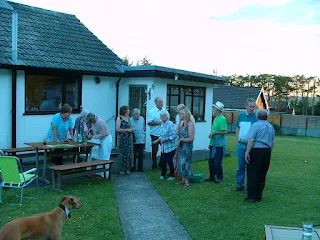At One with Nature
Sue Parker and Pat O’Reilly,
First Nature,
 |
Fig1s –
The Snapdragon, Antirrhinum majus
– tailor made for bees. |
consider the role of gardening in nature conservation
The role of gardening and gardeners in plant conservation is well known: botanical gardens around the world play a vital part in protecting endangered plants from extinction. This is a far cry from their beginnings, when they were developed mainly to house and propagate plants such as tea, tobacco and palms for their cash-crop value. Today, these gardens focus more on research and education, and as attractions that delight and inspire millions of visitors every year.
 |
Fig2s –
A wildlife garden managed for insects –
early springtime |
Our own much smaller-scale gardening efforts may not attract massive grants from important organisations charged with attempting to reverse the mass extinction of plants and animals, but we can still play an important role in the conservation of wildlife. If you were to add up the total amount of land occupied by gardens across Wales, it would easily dwarf even the collective size of our botanical gardens and probably bear comparison with some of our national parks and nature reserves.
How can we capitalise on this resource for the benefit of birds, insects and other wild animals? So-called 'wild' gardens may appeal to those who see this as an ecologically sound justification for avoiding the hard work needed to create a more formal backdrop to our homes. Others may simply see as a complete anathema gardens left in the busy hands of Mother Nature as overrun with 'weeds' whose hobbies include ripping clothing and flesh. In reality, small changes to what we grow (and where) can determine whether or not our gardens are wildlife friendly.
 |
Fig3s –
A wildlife garden managed for insects –
high summer
. |
| Gardens that reflect the surrounding vegetation have another advantage. They provide corridors through which wildlife can more easily migrate if their homes in the wild are damaged or destroyed either by natural disaster or by industrial zones, houses and other developments built with little or no regard for the ecological heritage of the area. |
Growing native plants that have long-established relationships with Wales’s landscape and the creatures that live here is one of the surest routes to success, both for the gardener and for the local wildlife. This is true whether we grow plants for their beauty or their food value. Looking at the garden as a whole (thinking of it in ecosystem terms) rather than as a series of separate beds, borders and lawn areas can help, too. Putting plants in positions where they would thrive in the wild means that not only are they more likely to do well but also that they may quickly form mutually beneficial relationships with insects and other creatures that favour the same habitats. Such a garden becomes part of the complex web of biological relationships that occur in nature.
 |
Fig4s –
The Peacock Butterfly, Inachis io –
a lovely free late summer garden ornament
if you get the plants right. |
Large expanses of chemically-managed lawns devoid of trees, plants and other features benefit very few wildlife species; and, with drought becoming an increasing problem, they are costly in terms of water resources.
One of the most pressing conservation problems is the alarming decrease in pollinating insects. Whatever is damaging them (and the jury is still out) is sure to be harming other insects, among them our native colourful butterflies and moths. Some flowers are much more beneficial to these kinds of insects than others are, and so it is worth trying to find out which plants are the best. Fortunately there are clues all around us, and even a short walk in spring or early summer will take you past a range of plants, some of which will be buzzing with insects.
Bees, which can see ultraviolet, are attracted to plants with purple or blue flowers. The trick is to choose those that are sturdy enough to support the bee’s weight and shaped to suit its girth. A snapdragon, for instance, has a ready-made platform that leads the bee down a funnel to where it finds nectar - its reward for helping with pollination. Most butterflies like pink and yellow flowers, but they dislike windy and shady places. Plants chosen to support butterflies should therefore be grown in sheltered sunny spots, and preferably in big clumps rather than individual specimens. Planning for a succession of flowers that insects like will ensure that they have food throughout the year.
 |
Fig5s –
The Orange-tip Butterfly, Anthocharis cardamines –
most visible in springtime
when the Cuckoo Flowers Cardamine pratensis are blooming.
|
Of course, if you can talk your neighbours into growing wildlife-friendly plants too, the wildlife will have an even bigger area in which to hunt for food without being exposed to predators as they travel from one small food bank to another.























